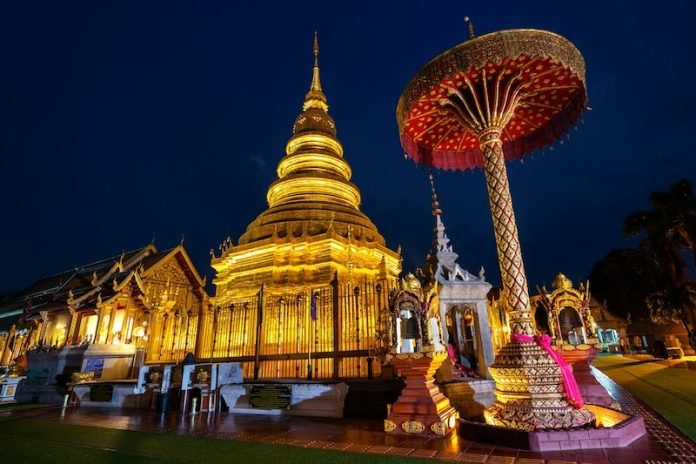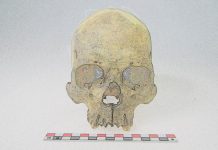
In the lush highlands of northwestern Thailand, nestled among deciduous and evergreen forests, lies a fascinating piece of history from the Iron Age.
Here, in the area known as Pang Mapha, ancient wooden coffins perched on stilts in caves and rock shelters reveal a unique mortuary practice dating back between 2,300 and 1,000 years ago.
These coffins, each carved from a single teak tree and adorned with intricate designs, are the remnants of the Log Coffin culture, a testament to the complex social and cultural practices of the people who once lived in this region.
An international research team, including experts from the Max Planck Institute for Evolutionary Anthropology in Germany and the Prehistoric Population and Cultural Dynamics in Highland Pang Mapha Project in Thailand, has embarked on a groundbreaking study to uncover the secrets of these ancient communities.
By analyzing DNA from 33 individuals buried in these log coffins, they have begun to unravel the genetic story of a community that was both large and intricately connected.
The significance of this research cannot be overstated. It sheds light on the Log Coffin culture, revealing that the people who practiced this unique burial method formed a closely-knit community, where genetic relationships influenced where individuals were laid to rest.
This discovery challenges previous understandings and highlights the complexity of social structures in prehistoric Southeast Asia.
The analysis also contributes to a broader understanding of the genetic landscape in post-Neolithic Southeast Asia.
The team found evidence of two distinct farmer-associated ancestries among the individuals analyzed, one connected to the Yangtze River Valley and another to the Yellow River valley in China.
This genetic diversity reflects the varied cultural practices and dietary habits of the region, suggesting separate migration routes and influences during the Neolithic period.
This study stands as the first of its kind to provide a community-level analysis in Southeast Asian archaeology.
Through the examination of identical-by-descent (IBD) blocks, the researchers were able to trace complex patterns of biological relatedness within and across the Log Coffin sites.
They discovered close genetic relatives buried together, indicating a deliberate choice in burial location based on family connections.
Yet, the broader genetic links between different sites and the high level of genetic diversity point to a society that was expansive and well-connected across different landscapes.
Professor Rasmi Shoocongdej, a leading figure in this research, emphasizes the importance of these findings.
They not only deepen our understanding of the Log Coffin culture but also open new avenues for future studies to explore cultural dynamics and population interactions in Southeast Asia and beyond.
As we continue to piece together the puzzle of human history in this region, the story of the Log Coffin culture stands as a reminder of the complexity and interconnectedness of ancient communities.
This research marks a significant step forward in our understanding of the genetic history of mainland Southeast Asia.
With plans for future studies to explore samples from open-air archaeological sites and further analyses of genetic markers, we are on the cusp of uncovering even more about the lives of the people who once roamed these ancient forests and mountains.
The collaboration between local scholars and the application of novel techniques promises to bring new insights into the fascinating history of this region, bridging the gap between the past and our present understanding of human evolution and cultural development.
The research findings can be found in Nature Communications.
Copyright © 2024 Knowridge Science Report. All rights reserved.



